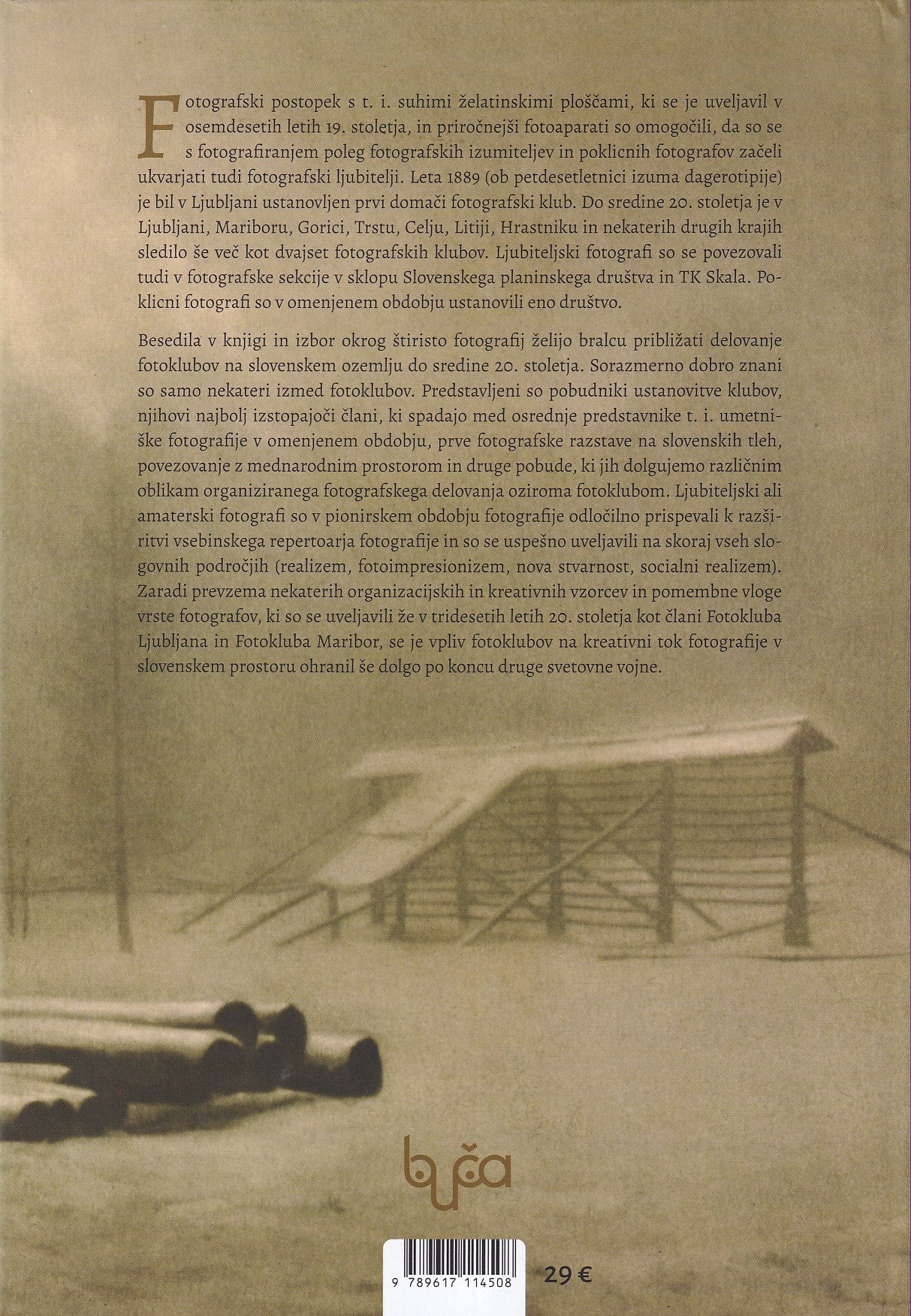Damir Globočnik / V kraljestvu fotografije
Damir Globočnik / V kraljestvu fotografije
Couldn't load pickup availability
Secured and trusted checkout with:

V kraljestvu fotografije [In the Realm of Photography] by Damir Globočnik provides an insight into the activities of the first photography clubs in Slovenia in the period between 1889 and 1950. The book contains a selection of around four hundred photographs.
The photographic process with the so-called dry gelatine plates, which became established in the 1880s, and the convenience of cameras made it possible for amateur photographers, alongside photographic inventors and professional photographers, to take up photography. In 1889 (on the fiftieth anniversary of the invention of the daguerreotype), the first local photography club was founded in Ljubljana. By the middle of the 20th century, more than twenty more photography clubs had followed in Ljubljana, Maribor, Gorizia, Trieste, Celje, Litija, Hrastnik and other places. Amateur photographers also formed photographic sections within the Slovenian Mountaineering Society and TK Skala. Professional photographers founded one association during this period.
The texts in the book and the selection of around four hundred photographs aim to bring the reader closer to the activities of photoclubs on Slovenian territory up to the middle of the 20th century. Only some of the photoclubs are relatively well known. The initiators of the clubs, their most outstanding members, who were among the central representatives of the so-called artistic photography in this period, the first photographic exhibitions on Slovenian soil, the linking with the international space and other initiatives that we owe to various forms of organised photographic activity, or photoclubs, are presented.
In the pioneering period of photography, amateur photographers made a decisive contribution to the expansion of the repertoire of photography and successfully established themselves in almost all stylistic areas (realism, photo-impressionism, new reality, social realism). Due to the adoption of certain organisational and creative patterns and the important role of a number of photographers who had already established themselves in the 1930s as members of the Fotoklub Ljubljana and the Fotoklub Maribor, the influence of photography clubs on the creative flow of photography in Slovenia continued long after the end of the Second World War.
Language: Slovene
Size: 29,8 x 21 cm, 391 pages
Binding: hardcover
Publisher: Buča, 2023




